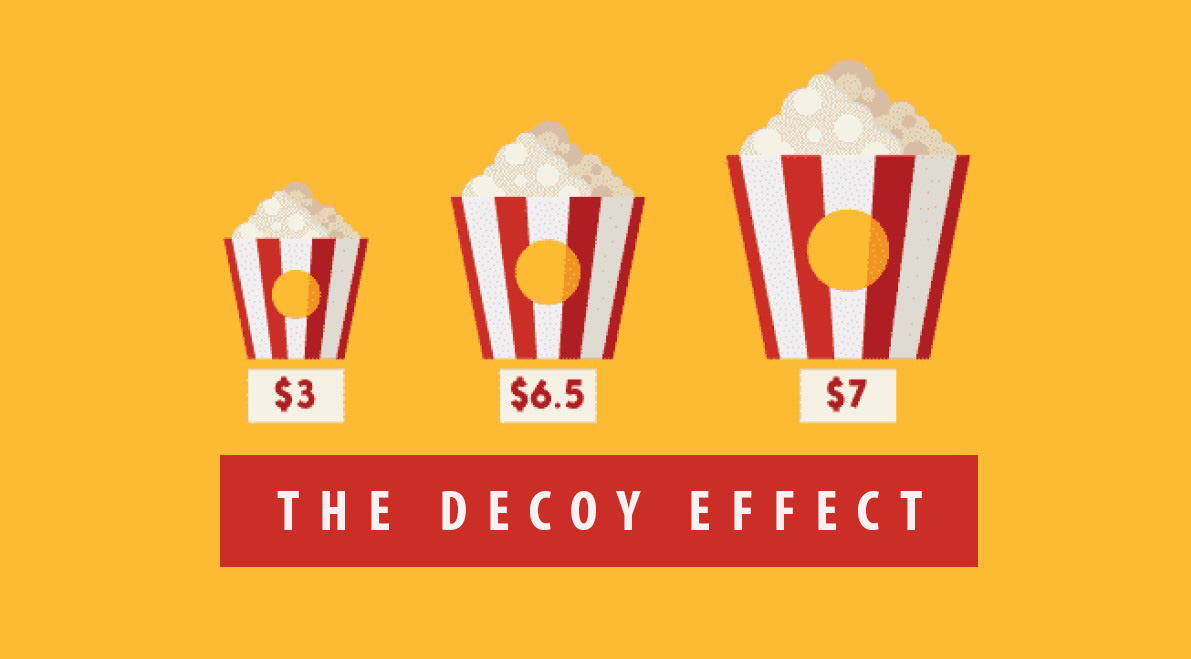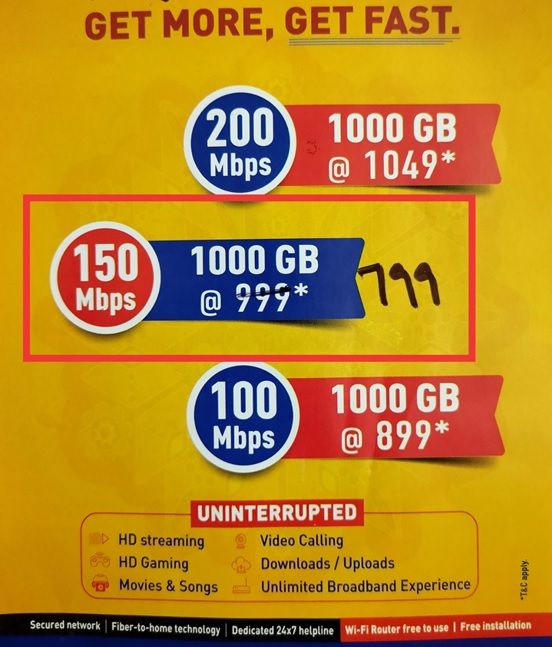
#1
Decoy Effect: the irrelevant is more than relevant
By Nitin Shankar K
Ever since the release of Predictably Irrational by Dan Ariely, the decoy effect has found its way into every marketing agency's playbook. The decoy effect is a cognitive bias whereby a person’s preference between two alternative change with an introduction of a third irrelevant option. One day, a salesman threw a flyer for a broadband internet connection advertisement into my house in Chennai, India. Here's the picture of the ad.
 What's so interesting about this flyer. It's like any other advertisement where they slash the prices by 10-20%. However, if you compare all the three prices, that's when you realize something is beguiling.
What's so interesting about this flyer. It's like any other advertisement where they slash the prices by 10-20%. However, if you compare all the three prices, that's when you realize something is beguiling.
The service provider offers three plans with the same amount of data (1000 GB) at different levels of speed each offered at different price levels. The first one costs Rs. 1049 with a speed of 200 Mbps. Whereas, the plan with the least speed cost Rs. 899 with an internet speed of 100 Mbps. Now, let's look at the middle option. The original price was at Rs. 999 offering 150 Mbps. At these price levels, going for any of the plans depends on an individual's preferences; there's nothing insane, or irrational about choosing any plan or even not buying one.
However, the ad says that the price for the second plan had been cut down to Rs. 799. Therefore, no customer would go for the 899 plan as it gives you less value at a higher cost. Now, this price of Rs.899 which was considered to be the cheapest has now become a decoy: a distraction set up to impede your rational decision-making ability. You might have not chosen a plan at all at the initial price levels. Now you might feel as if you have gained Rs. 100 and an additional 50 Mbps speed, despite not knowing the actual cost of the service.
The etymology of the decoy effect comes from duck decoy. A duck decoy is a toy duck used to attract other ducks while hunting. A decoy, in general, is any person, animal or object used to lure someone or something for capture. A decoy is also someone or something is also something used as a distraction.
The decoy effect violates the independence of irrelevant alternatives. This theorem states that if A is preferred to B, and if another choice X is given, A should still dominate B. In our example, the 899 plan is considered to be X, while 799 plan is A and not getting a plan is B. Hence, the decoy effect is also termed as asymmetric dominance effect.
National Geographic conducted an experiment in a movie theatre to understand the decoy effect. At a popcorn counter, they offered small and large (twice as that of small) packs at $3 and $7, respectively. The customers, in general, either bought one or more small popcorn packs, instead of large ones. Later, besides the small and the large packs, the popcorn seller offered a medium popcorn at $6.50. Essentially, they have just added a third alternative without affecting the other two existing choices. The medium is still more expensive than buying two small packs. Therefore, this addition should not ideally affect consumer preference compared to the previous pricing model. However, many customers opted for large packs. The reason they told, when questioned about their behavior, was that they were able to get a large popcorn instead of medium one for just $6.50. Hence, the inclusion of a third irrelevant option had altered the choice of the customers between the initial substitutes.
Such kinds of psychological pricing techniques are common across your everyday purchases whether it's about buying a pack of popcorn, a magazine subscription, or even an iPhone.


 What's so interesting about this flyer. It's like any other advertisement where they slash the prices by 10-20%. However, if you compare all the three prices, that's when you realize something is beguiling.
What's so interesting about this flyer. It's like any other advertisement where they slash the prices by 10-20%. However, if you compare all the three prices, that's when you realize something is beguiling.